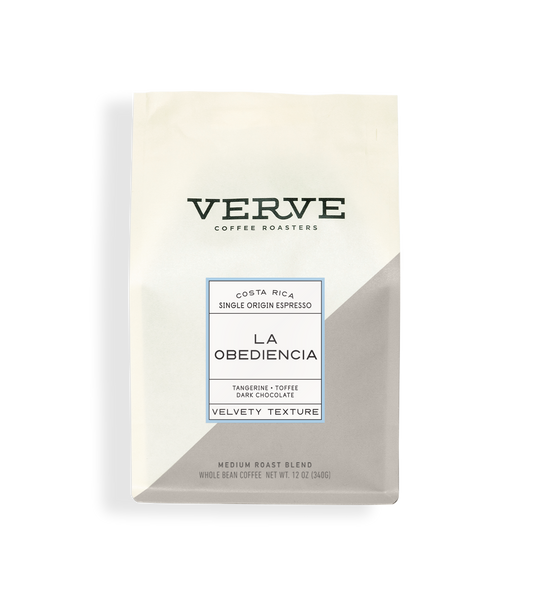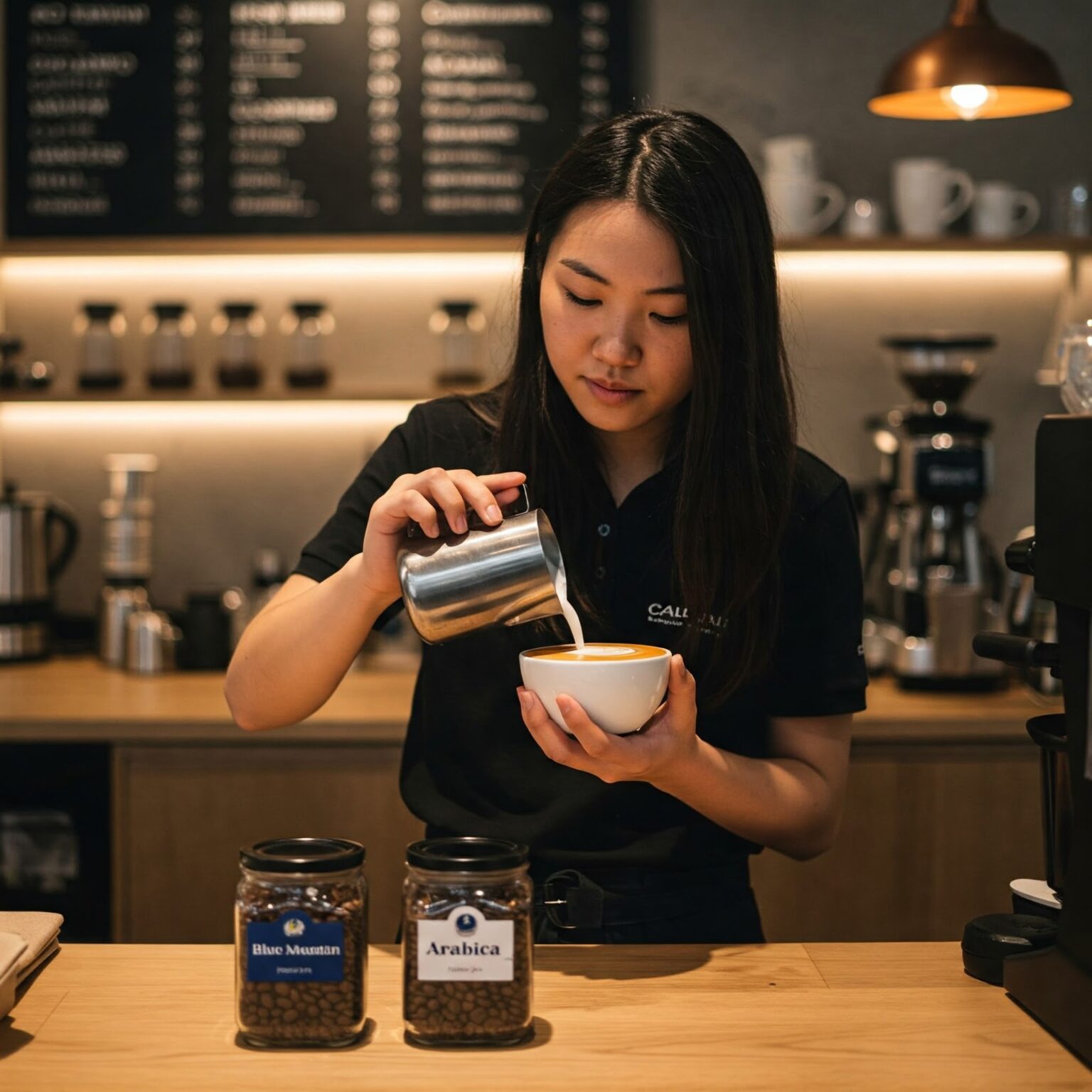Coffee Beans 101: Every Little Thing You Need to Learn About Espresso and Blended Coffee Beans
When it involves coffee, comprehending the subtleties of espresso and combined beans can transform your day-to-day cup. You'll find the distinct characteristics of Arabica and Robusta beans, and how each influences flavor and high levels of caffeine content. From the growing procedure to toasting methods, every step contributes in your coffee experience. So, what makes the excellent mixture? Allow's check out the important elements that add to an outstanding mug of coffee.
Recognizing Coffee Beans: Ranges and kinds
When diving right into the globe of coffee, recognizing the kinds and selections of coffee beans is essential for every enthusiast. Arabica beans are known for their smooth, complex tastes and lower high levels of caffeine material, making them a preferred among coffee enthusiasts.
Within these types, you'll discover different local ranges, each bringing distinct attributes. As an example, Ethiopian Yirgacheffe uses intense floral notes, while Colombian beans supply a well-balanced flavor account. As you discover, remember to focus on processing approaches like washed or all-natural, as they can substantially affect the final preference. By familiarizing on your own with these beans and their tastes, you'll elevate your coffee experience and make even more educated choices in your developing trip.
The Expanding Process: From Seed to Bean
When you explore the trip of coffee, it all begins with seed choice methods that establish the structure for top quality. From there, farming and gathering play necessary duties in making certain the beans prosper. Ultimately, processing methods change those harvested cherries into the coffee beans you enjoy.
Seed Choice Strategies
Selecting the right seeds is vital for generating top quality coffee beans, as it lays the foundation for the whole expanding process. You ought to begin by selecting seeds from reputable resources that prioritize quality and genetic variety. Look for varieties known to thrive in your specific environment and dirt conditions. Focus on the seed's age and storage conditions, as fresh seeds have a tendency to germinate far better. When possible, select natural seeds to decrease direct exposure to dangerous chemicals. Consider the condition resistance of various ranges, as this can substantially affect your yield. Do not be reluctant to seek advice from with neighborhood farmers or experts to obtain insights into the best seed options for your region. This understanding will enhance your coffee-growing experience.
Growing and Harvesting
As you support your coffee seeds right into growing plants, recognizing the cultivation and harvesting procedure is vital for attaining the best taste and high quality. Beginning by planting your seeds in well-draining dirt, preferably in a shaded location to safeguard them from direct sunshine. As your plants expand, keep constant wetness, and bear in mind their demand for nutrients. Trim routinely to promote air flow and healthy growth.
When it comes time to harvest, look for ripe cherries, which generally turn a lively red. Hand-picking is typically the best method to ensure only the ripest cherries are chosen. Timing is essential; collecting prematurely or far too late can affect the flavor account of your beans. Embrace perseverance and care, as this is where top quality begins.

Handling Methods Described
Once you've harvested your coffee cherries, the following crucial step is processing them to change those vibrant fruits into the beans you'll brew. There are 2 major methods: the wet process and the dry process. In the dry process, you spread the cherries out in the sunlight to completely dry, permitting the fruit to ferment and present unique flavors to the beans. On the other hand, the wet process includes getting rid of the fruit promptly and fermenting the beans in water, causing a cleaner preference. After handling, the beans are hulled, arranged, and generally dried out once again. Each technique impacts the taste profile, so try out both can help you discover your favored brew. Recognizing these methods is crucial to appreciating your coffee experience.
Toasting Methods: Exactly How Flavor Is Developed
When it comes to toasting coffee beans, comprehending roast levels is key to disclosing their one-of-a-kind tastes. Each toasting method impacts the fragrance and improves the flavor development procedure, offering you a richer coffee experience. Let's explore just how these aspects come together to boost your day-to-day brew.
Roast Degrees Described
Roast levels play an important function in forming the taste profile of your coffee. By recognizing these levels, you can better pick a coffee that matches your taste choices. Experiment with different roasts to find which one resonates with you, boosting your overall coffee experience and pleasure.
Effect On Fragrance
The roast degree not just affects the taste of your coffee but likewise substantially affects its aroma. When you select a light roast, you'll usually notice brilliant, flower notes that can make your coffee scent vibrant and fresh. As the beans darken, the fragrance shifts; a medium roast highlights extra well balanced, caramelized fragrances, while a dark roast often tends to feature strong, great smoky undertones. Each roasting technique releases different unstable substances, shaping how your coffee smells. Additionally, the quality of the beans plays a vital duty; newly baked coffee launches more fragrant oils, enhancing that attracting fragrance. So, take note of the roast level-- it's vital to exposing the complete fragrant experience of your mixture.
Taste Advancement Process
As you discover the taste development process, you'll discover that toasting strategies play an essential function in shaping the taste profile of your coffee. The toasting temperature level and time straight influence the acidity, sweet taste, and anger of the beans. Light roasts maintain even more of the bean's initial flavors, highlighting fruity and flower notes.
Coffee vs. Blended Coffee: Secret Distinctions
Coffee and article source combined coffee each deal distinct experiences that accommodate various preferences and choices. Coffee is a concentrated coffee brewed forcibly warm water through finely-ground coffee beans, leading to a rich, bold taste and a luscious layer of crema on top. It's typically taken pleasure in as a shot or used as a base for drinks like cappucinos and coffees.
On the various other hand, combined coffee incorporates numerous beans from various areas, developing an extra balanced flavor account. You'll typically find blends that highlight sweetness, acidity, or body, making them functional for different developing methods. While espresso concentrates on strength, mixed coffee may use a more comprehensive array of tastes that can alter with each sip.
Eventually, your option between espresso and combined coffee come down to your individual choice. Whether you crave a leisurely cup or a quick jolt, both options have something scrumptious to offer.

Brewing Techniques: Opening the Perfect Mug
When it comes to developing coffee, finding the right approach can transform your experience and boost your cup. Each developing strategy a knockout post has its unique charm and can considerably influence your coffee's flavor and fragrance. Using a French press enables you to delight in a robust and abundant brew, while a pour-over method gives a tidy, bright mug with unique flavors.
If you prefer espresso, purchasing a top quality equipment can aid you master the art of drawing shots. Alternatively, for benefit, a single-serve capsule system offers speed without giving up preference.
Don't fail to remember concerning chilly mixture, which supplies a smooth, much less acidic coffee perfect for hot days. Experiment with different methods to discover what resonates with your taste.
Sampling Notes: Determining Flavor Profiles
Just how can you really appreciate your coffee if you do not know what tastes to look for? Tasting notes are your overview to comprehending the intricate world of coffee. Some coffees might leave a chocolatey or sugar aftertaste, while others may have a bright, clean coating.
Take into consideration the body of the coffee, these details as well; is it ventilated and light or thick and syrupy? Do not neglect acidity; an intense acidity can include sprightliness, while a low level of acidity could provide a smoother experience. By identifying these flavor accounts, you'll deepen your link with each mug, making coffee tasting a fascinating journey of exploration.

Tips for Selecting and Keeping Coffee Beans
Keeping and picking coffee beans appropriately can significantly improve your developing experience. Start by selecting high-quality beans that fit your preference. Look for freshness; beans baked within the last 2 weeks are suitable. Check the roast day on the packaging, and buy from local stores or respectable roasters.
Once you have your beans, store them in a closed container to stop direct exposure to air, wetness, and light. A dark, amazing area functions best, so avoid keeping them in the fridge or fridge freezer, as this can present wetness. Only grind the quantity you require to keep quality; entire beans keep flavor longer than pre-ground coffee.
Lastly, try to use your beans within two to 4 weeks after opening up for peak preference. Complying with these ideas will certainly ensure your coffee stays flavorful and pleasurable, elevating your daily brew to brand-new elevations.
Frequently Asked Questions
The Length Of Time Do Coffee Beans Remain Fresh After Roasting?
Coffee beans remain fresh for regarding two weeks after roasting - SOE. You ought to store them in an airtight container, away from light and dampness. Afterwards, their taste and fragrance begin to decrease substantially

Can I Mix Different Coffee Bean Varieties?
Absolutely, you can blend different coffee bean ranges! Trying out blends can enhance tastes and create a distinct taste profile. Simply make certain to stabilize the toughness and features of each selection for the best results.
What Is the Ideal Grind Size for Coffee?
For espresso, you'll want a great work dimension, concerning the structure of common salt. This permits ideal removal, causing a rich, savory shot. Experiment a bit to locate what fits your preference best!
Exactly How Does Elevation Affect Coffee Bean Flavor?
Elevation affects coffee bean taste by influencing the development rate and chemical composition. Greater elevations cause slower growth, which enhances level of acidity and intricacy, providing your coffee a special and dynamic taste you won't fail to remember.
Exist Decaffeinated Versions of Coffee Beans?
Yes, there are decaffeinated variations of coffee beans. You can enjoy an abundant coffee flavor without the caffeine kick. Simply search for "decaf" blends at your neighborhood coffee bar or specialty shop.
Coffee Beans 101: Whatever You Need to Know Concerning Espresso and Blended Coffee Beans.
When diving into the world of coffee, comprehending the types and selections of coffee beans is essential for every enthusiast.When it comes to toasting coffee beans, recognizing roast levels is crucial to disclosing their distinct tastes. Coffee is a focused coffee brewed by compeling warm water via finely-ground coffee beans, resulting in an abundant, strong flavor and a creamy layer of crema on top.On the various other hand, combined coffee integrates numerous beans from different regions, creating a more balanced flavor profile.